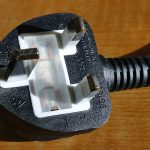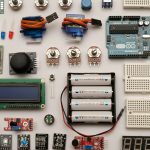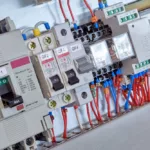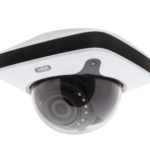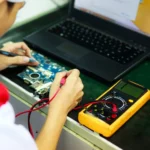
Microcontrollers, as the name indicates are tiny computers or microcomputers that are self-contained on a single chip. Microcomputers are basically designed to perform a single task, they are designed in such a way that they run a single program repeatedly. These are preprogrammed by the user in a single device automated to perform a single task. Unlike microprocessors that have general purpose applications and are versatile, microcontrollers have embedded applications. Although microcontrollers do contain microprocessors as its key components but it is far less complex form of CPU’s. This is due to the fact that microcontrollers are automated to perform a single specific job. To achieve functionality in a microcontroller it usually works in connection with other electronic components and electronic circuits that are connected through a printed circuit board.
Applications
Microcontrollers have gained a huge market share and penetrated their way into the market. They have widespread industrial applications plus they are used in most of the modern technologies and gadgets nowadays. If you find an electronic device that has a sensor, a display a user interface and output control it is most likely to contain MCU.
Some common applications of microcontrollers are:
- Automation and robotics is the widely known application.
- They are also used in consumer electronics and computer appliances.
- Microcontrollers are used in IoT devices and systems as well.
- They can be used in medical and laboratory equipment.
- They are used in industrial and production environment control systems like HVAC systems.
- They are widely used in cars and vehicle control systems.
What do they do?
A microcontroller board can sense, monitor, and also respond to certain events or behaviors that it picks up from its connected components or environment. This happens when it is installed as part of a functioning circuit in device. As mentioned before a microcontroller is programmed to perform a single task repeatedly, so it can also be programmed to give a specific type of output signals in reaction to certain inputs.
This could include the completion of tasks such as:
- Lighting up an LED in response to touch-based user command.
- It can also turn on lights and sound in temperature sensing applications.
- It can be used as a sensor application in alarms and other warning systems.
- It is can be used in mechanical devices such as a motor in which it can determine the need to be switched on or off in a pump.
What are the Best Microcontrollers?
The best kind of microcontroller depends on your project choice so, you should consider a few factors before selecting the best ones for your device.
- It should have temperature tolerance and should not be temperature sensitive.
- Its architecture is the most important factor to consider.
- You should also consider its memory capacity according to your needs.
- Performance vs. power consumption is an important factor to consider.
- Consider its cost-effectiveness.
- Buy a microcontroller with the maximum frequency.
- It should be bought from a reliable brand or manufacturer.
Summary
Microcontrollers have widespread industrial and technological applications due to which they are considered one of the most popular electronic components in the UK and other countries as well. Judging from its uses we can determine how important they are to be used in certain electronic devices. You need to consider certain factors to decide which ones you need considering the fact that they are designed to perform one specific job repeatedly.








